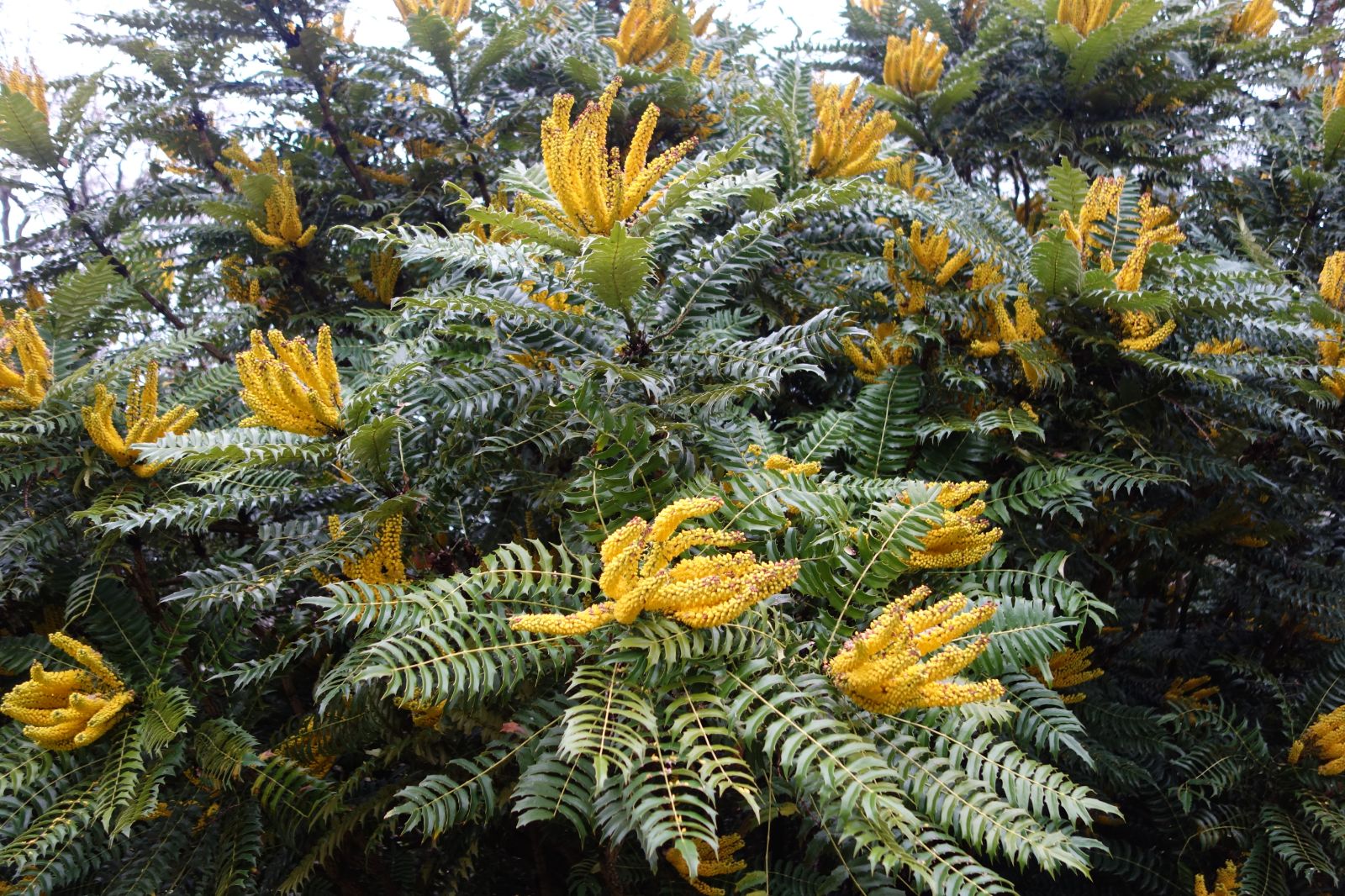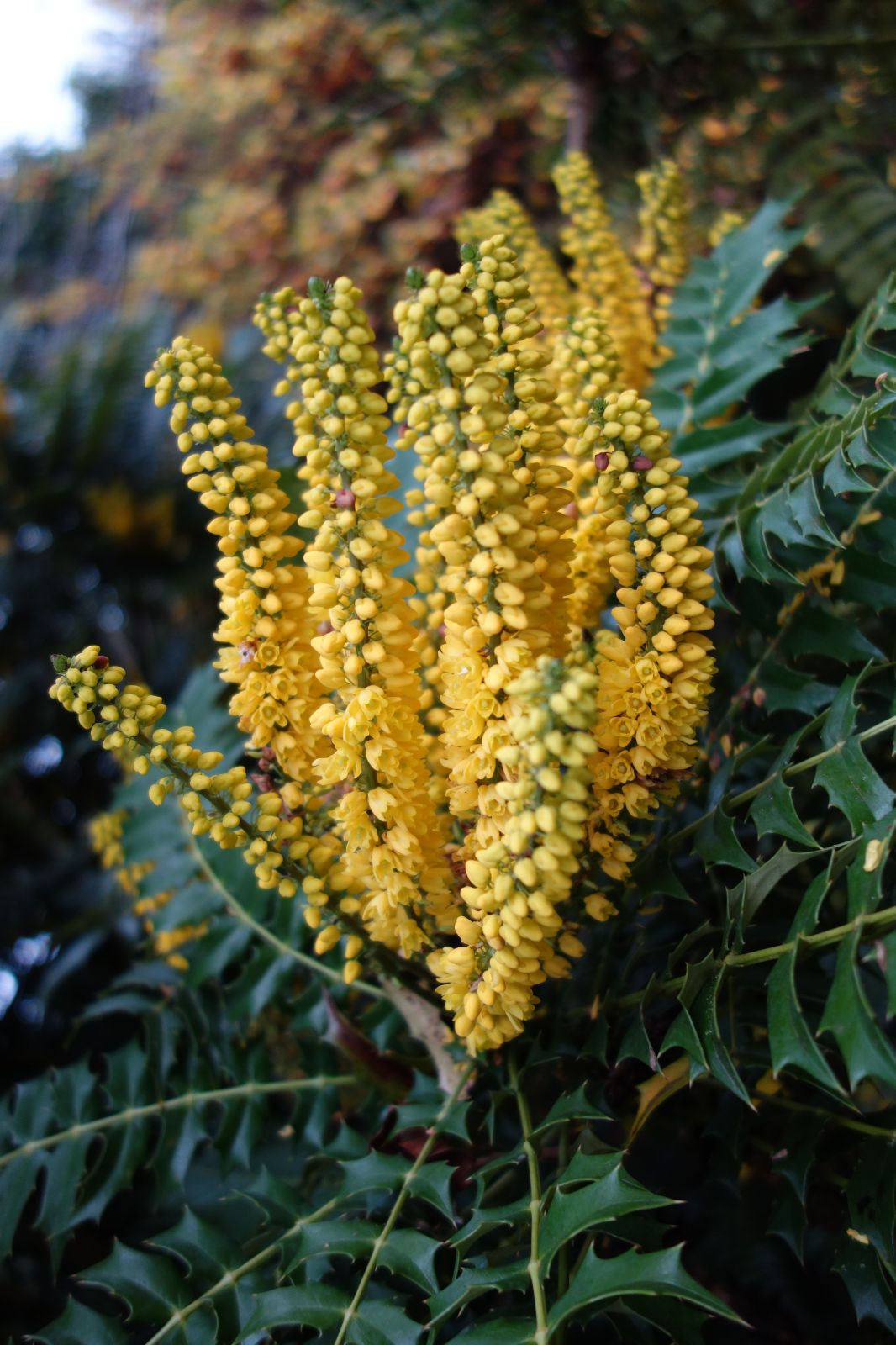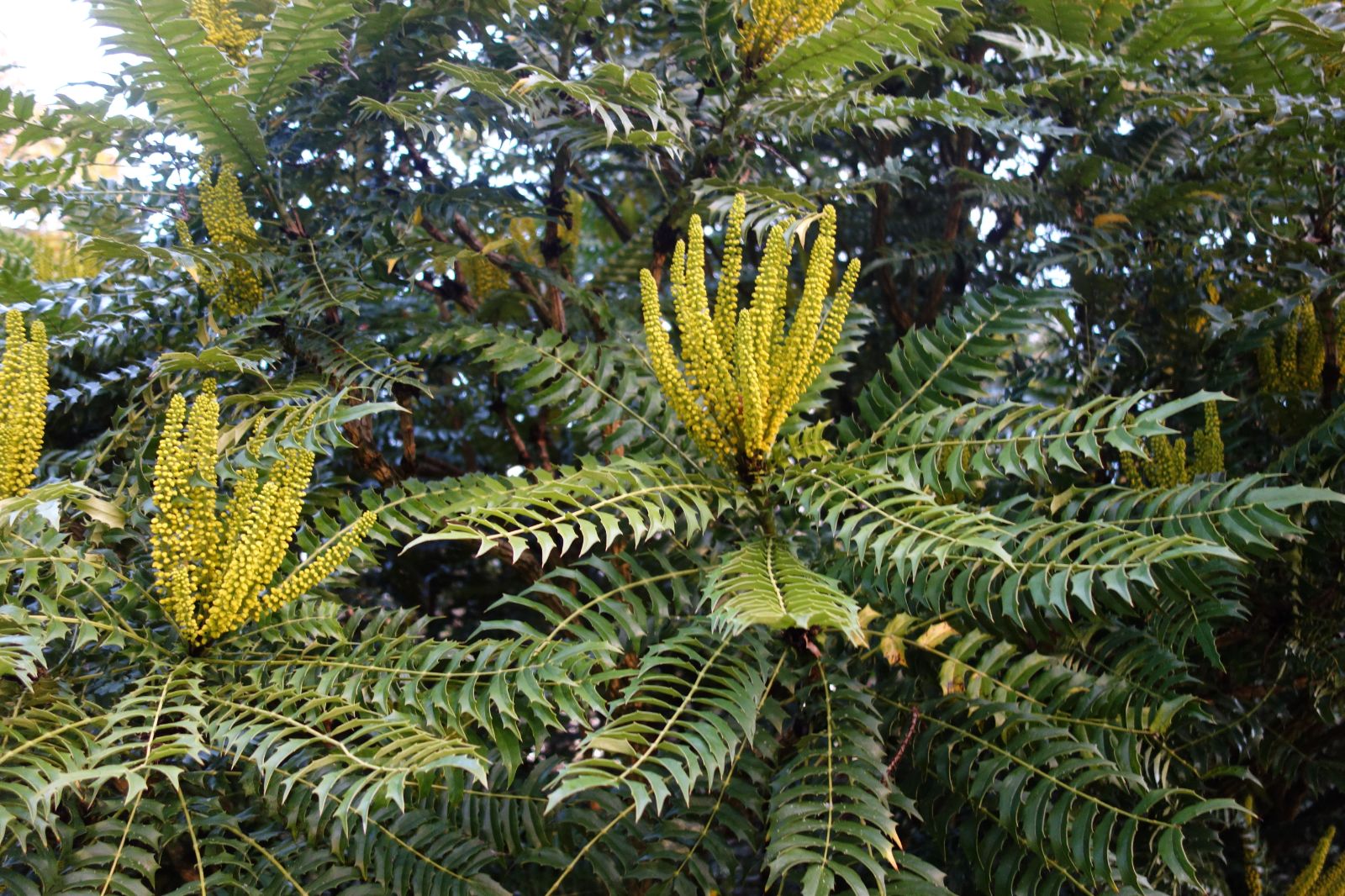Mahonia lomariifolia
Credits
Article from Bean's Trees and Shrubs Hardy in the British Isles
Recommended citation
'Mahonia lomariifolia' from the website Trees and Shrubs Online (treesandshrubsonline.
Genus
Other taxa in genus
- Mahonia acanthifolia
- Mahonia aquifolium
- Mahonia arguta
- Mahonia 'Charity'
- Mahonia fortunei
- Mahonia fremontii
- Mahonia gracilipes
- Mahonia haematocarpa
- Mahonia 'Heterophylla'
- Mahonia japonica
- Mahonia × media
- Mahonia nervosa
- Mahonia nevinii
- Mahonia pinnata
- Mahonia repens
- Mahonia schiedeana
- Mahonia trifolia
- Mahonia trifoliolata
An evergreen shrub 8 to 12 ft high; stems erect. Leaves pinnate, 10 to 24 in. long, carrying 91⁄2 to 181⁄2 pairs of leaflets, each leaflet 11⁄2 to 4 in. long, usually 1⁄2 to 1 in. wide, stalkless, linear-lanceolate, oblique at the base, more or less incurved towards the apex, the margins and apex spiny-toothed, stiff, leathery, glabrous. Flowers fragrant, bright yellow, densely crowded on erect cylindrical spikes 4 to 8 in. long by 1 in. wide, which are clustered as many as eighteen or twenty together at the apex of the shoots; petals oblong, about 1⁄4 in. long, the apex rounded and notched. Fruits oval, 2⁄5 in. long, blue-black. Bot. Mag., t. 9634.
Native of Burma, W. China, and possibly also of Formosa, where several mahonias grow which may be forms of M. lomariifolia but have not yet been thoroughly studied. Major Johnston of Hidcote Manor, Gloucestershire, originally introduced the species to cultivation by means of seeds he obtained near Tengyueh, Yunnan, in 1931. He raised plants and distributed them from his garden at Menton. This is probably the handsomest of the mahonias. It is not perfectly hardy except in the maritime counties to the south and west, but hardier than once thought. The late Miss Davenport Jones had a fine specimen in her garden in Kent (Journ. R.H.S., Vol. 85, p. 394 and fig. 125).
Sometimes, as seen wild, it is 30 to 40 ft high, its erect trunk and stems each carrying a tuft of foliage at the summit. Its time of flowering seems to be variable. A plant in bloom was given an Award of Merit at Vincent Square on 24 May 1938, and a First Class Certificate on 24 October 1939.
From the Supplement (Vol. V)
An error in earlier editions of this work went uncorrected. The award given on 24 May 1938 was to M. lomariifolia as a foliage plant. The flowering time of this species is in autumn.



